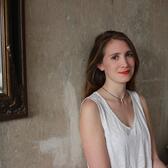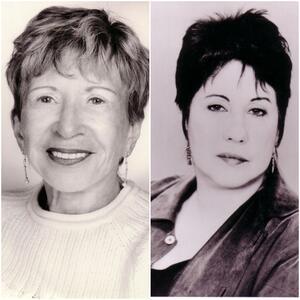The Lawyers and Researchers of Second-Wave Feminism
This Women’s History Month, the Jewish Women’s Archive is celebrating the thousands of Jewish women who have participated in activism and resistance in the United States. We all know the names of the most famous women who shaped these movements, from Gloria Steinem to Emma Goldman: the women with the megaphones, with the loud voices and stirring speeches, the women whose names made it into the history books. But one person alone can never make a movement. This month, we’re celebrating the women behind the scenes: the academics, the researchers, the women who posted bail and drove getaway cars for their more famous friends. These behind-the-scenes resistors are not as well-known, but their stories and legacies are no less important than the frontlines women we all love. You can find out more about the project here. We hope that by sharing these resistors’ stories and contributions, we will demonstrate that you don’t need the loudest voice or the most extroverted personality to affect change. And we hope to inspire you to bring your own skills to the causes most important to you in 2017.
It’s nigh impossible to think about Second Wave Feminism without thinking about Gloria Steinem: the blonde beauty of the 1960s and 1970s, with those signature sunglasses, always ready with a quip or a fundraising campaign or a battle cry, always game to set pen to paper for anything from a satirical article about menstruation to a sensitive, smart take on Marilyn Monroe.
We love Gloria. She’s one of our Women of Valor; her face is emblazoned on one of our most popular T-shirts. But she is not the only second-wave feminist we should remember; neither are Bella Abzug and Betty Friedan. One of second-wave feminism's main tasks was to show how obstacles against women were embedded in every facet of society; these feminists needed to show how the game was rigged. And although a movement like that needed gung-ho spokeswomen, it also relied on women who had the academic and research expertise to bring new theories and hard data to the fight.
Phyllis Chesler, a self-described liberation psychologist, was one of those women. Chesler was involved in several aspects of second-wave feminism: she taught one of the first women’s studies classes at Richmond College during the 1969–1970 school year, and has written about gender-based economic disparity and motherhood. But perhaps her most important contribution stemmed from her expertise in mental health. This field sorely needed a feminist's perspective. Of course, psychology and psychiatry have aided many women, but they have also historically been used as tools of social control and persecution. The Victorian obsession with hysteria was really just the tip of the iceberg. Beyond that, we have the popular theory that women who sought roles besides “wife and mother” would descend into breakdowns and madness. And beyond that, in the realm of treatments, is where the horrors truly start: the asylums, the pelvic surgeries, the force-feeding, the tranquilizers and lobotomies.
Chesler, a licensed psychotherapist who completed her graduate work at the New School, told the world that this had to stop. In 1969, at an American Psychological Association meeting, she demanded $1 million in reparations for the women who had historically been drugged and locked up against their will by the mental health establishment. She followed up these demands with a text that proved her reasoning: her 1972 book, Women and Madness, which showed how women and men are treated differently in hospitals and psychologists’ offices. The book argues that behaviors exhibited by men are treated as normal by doctors, while behaviors exhibited by women are labeled as madness. She also showed that the medical establishment failed to recognize issues such as postpartum depression and childhood abuse as real problems.
Chesler's book, which combines patient interviews with a social analysis of women’s roles, has sold more than 2.5 million copies worldwide and is considered a pioneering feminist text, one of the first to show the depth to which women are pathologized by the medical community.
Thanks to women like Chesler, second-wave feminists were able to demonstrate the myriad of ways in which oppression of women was embedded in our political, legal, and medical structures. But that identification was only the first step. After the establishment made moves to address these problems, society still needed someone to enforce these new strictures.
Also known as lawyers.
Sonia Pressman Fuentes was one of those superstar legal advocates for second-wave feminism. She was the first female lawyer in the Office of the General Counsel at the Equal Employment Opportunity Commission, which had been created to enforce the provisions of the Civil Rights Act of 1964 that prohibited employment discrimination. Despite specific prohibitions against gender discrimination within the Act, the EEOC acted sluggishly to enforce those provisions. Fuentes became its sole outspoken advocate at the staff level, fighting to convince the EEOC to enforce the gender prohibitions in the Act.
In addition to her indispensable role at the EEOC, Fuentes used her legal expertise to bring this issue to the attention of the feminist movement at large. When Betty Friedan visited her office to interview EEOC officials for a second book, Fuentes told her that the Commission was failing to uphold the gender provisions of the Civil Rights Act and that women needed an advocacy group analogous to the NAACP. Friedan listened, and she and Fuentes went on to co-found the National Organization for Women along with 47 other activists in 1966. As a feminist advocacy group, NOW pressured the EEOC to implement the Act's requirements to ensure equal opportunities for women in the workplace.
Without lawyers like Fuentes and medical professionals and researchers like Chesler, second-wave feminism would not have had the data or the enforcement that it needed to combat centuries of oppressive political and social systems. By highlighting these women, we hope to demonstrate how legal experts and researchers can bring much-needed skill sets to activism and to remind you that professional organizers make up only a small percentage of the people necessary to create a movement.








Soon to come! The photographers who wrote the history of the women's movement!
In reply to Soon to come! The by Diana Mara Henry
yes, and you and your great photographs in particular !! thanks Diana!!
Fyi all, let's oot forget also that Microfilmed records of our movement., 40 countries worth and 90 reels worth, are still available thru the National Women's History Project in Santa Rosa. California, for your library to purchase.. Meanwhile... 450 libraries have our collections on microfilm from the Women's History Library in 14 countries and one such library might be near you!! HERSTORY ,, Women and Law and Women's Health Mental Health are the names of the 3 microfilm collections from 68-74. Enjoy, Laura X, founder/director
and PS. our library was sparked by our International Women's Day demo in Berkeley. in 1969 .. honoring the Bolshevik women who sparked the Feb revolution ! ( Feb 23 1917, iin Russia was March 8 in the West that day.) Outrageous that today's NY times leaves the women out!! for the full story in Sojourner. www.ncmdr.org/whm98.html also see LauraxInstitute.org for more current news